South Carolina is also known as the Palmetto State, after the Sabal palmetto tree, the state’s official tree. This species is native to the southern part of the United States and is one of the 15 species of palmetto palms.
The state consists of two main ecosystems: bottomlands and toplands. The former is home to a rather large tupelo and cypress forest, whereas the latter shelters hardwood, shortleaf pine, and longleaf pine forests. As a result, hundreds of plant species call the Palmetto State their home.
In the following lines, you’ll learn more about plants native to South Carolina. As such, if you’re interested in the state’s flora, keep on reading!
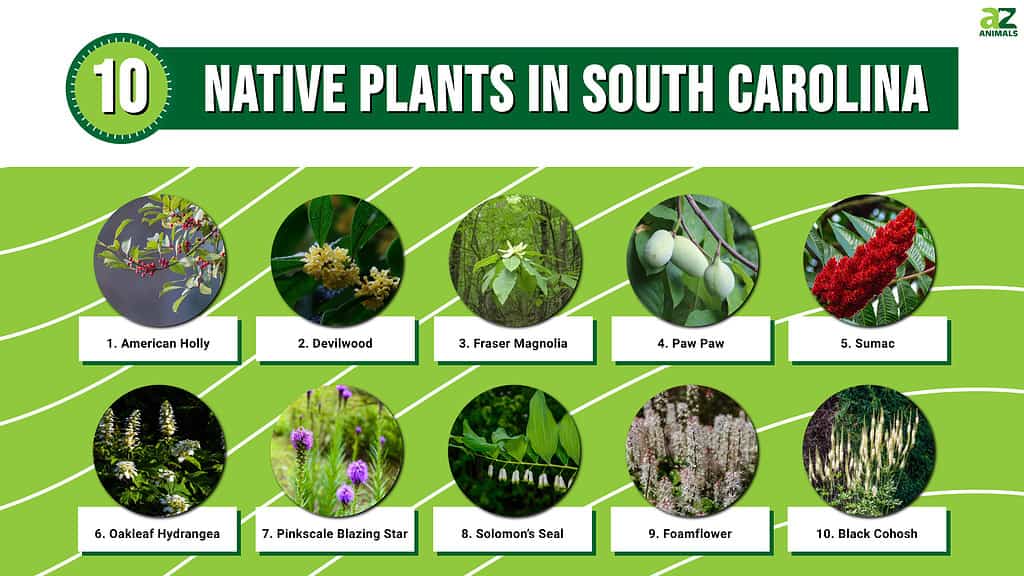
What Is a Native Plant?
A native plant is a species that has lived naturally in a certain area/region for thousands of years and is now a part of its ecosystem. In time, certain plants develop and adapt perfectly to a region’s climate, soil conditions, temperatures, light, and so on until they are practically part of the area.
Indigenous is another word that can describe plants and people that have inhabited a state’s area for thousands of years.
10 Native Plants in South Carolina
1. American Holly
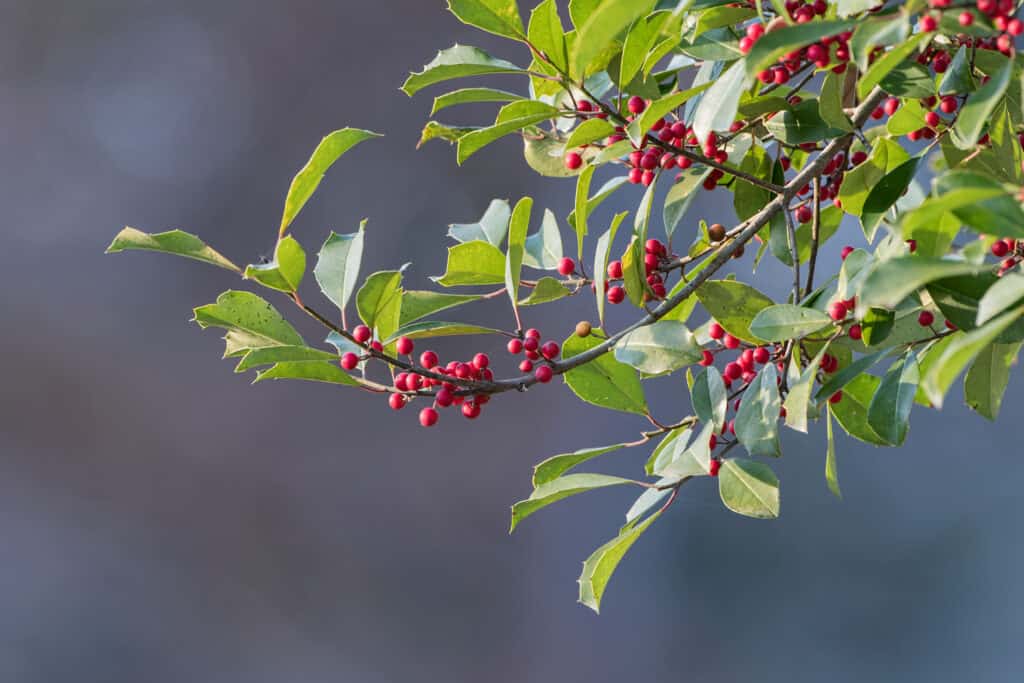
The American holly is an evergreen tree that usually grows up to 98 feet tall.
©Bonnie Taylor Barry/Shutterstock.com
| American Holly | |
|---|---|
| Scientific name: | Ilex opaca |
| Type of plant: | Evergreen |
| Distribution: | Eastern and south-central United States |
The American holly is an evergreen tree that usually grows up to 98 feet (30 m) tall and about 33-66 feet (10-20 m) wide. It is a famous plant, used mainly for ornamental purposes and for the well-known holly winter traditions.
Its most distinct characteristic is the fruit it bears. While growing, it is green and blends quite easily within the large foliage of Ilex opaca. However, at maturity, the tree’s fruits (called drupes) are bright red, although a bit small (about 0.2 – 0.47 inches or 6-12 mm). The fruit of the American holly has four seeds and usually persists into winter.
If you plan to grow Ilex opaca in your orchard, keep in mind that each male plant needs three female plants to ensure ideal fruit production.
2. Devilwood
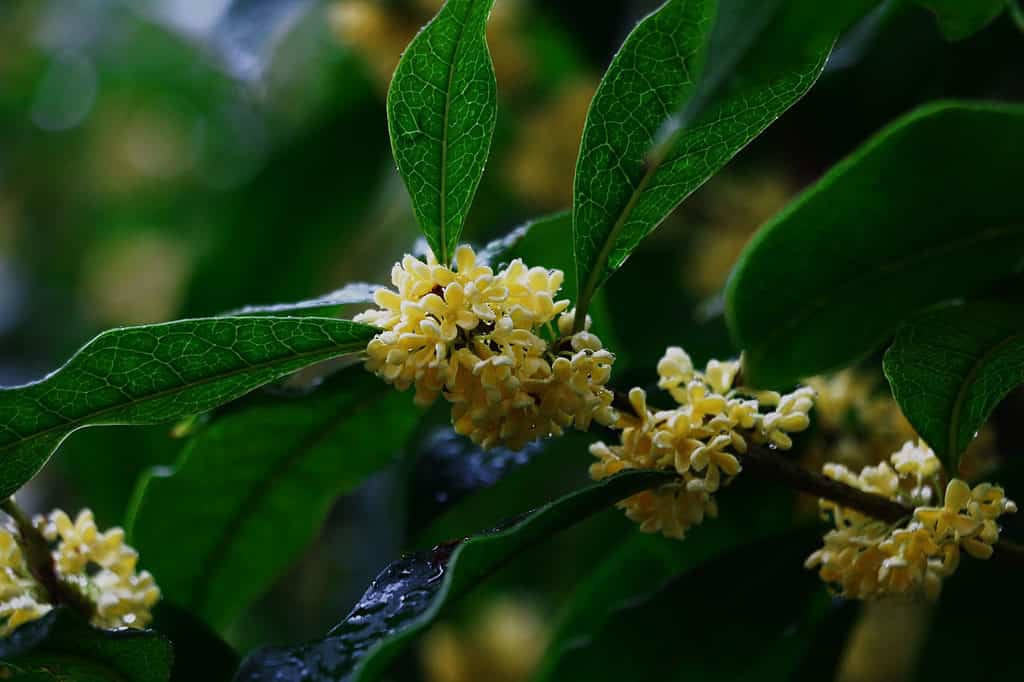
The devilwood can grow up to 13-23 feet tall.
©iStock.com/Wirestock
| Devilwood | |
|---|---|
| Scientific name: | Cartrema americana |
| Type of plant: | Evergreen |
| Distribution: | Southeastern North America |
Cartrema americana used to be known as Osmanthus americanus, but it was discovered that the Osmanthus genus was, in fact, polyphyletic, making the now C. americanus a better fit in the Cartrema genus.
The devilwood, American olive, or wild olive shrub (but it can also be a small tree) is able to grow up to 13-23 feet (4-7 m) tall and in some rare cases it can reach 36 feet (11 m). It produces flowers during early spring, which are small (about 0.4 inches or 1 cm long), white, and reportedly possess a strong smell.
Upon maturity, the devilwood produces globose fruits: dark blue drupes no bigger than 0.6 inches (15 mm) in diameter. The fruits of the devilwood contain a single seed. This, however, doesn’t make it difficult for the tree to be grown as an ornamental plant throughout North America’s gardens.
3. Fraser Magnolia
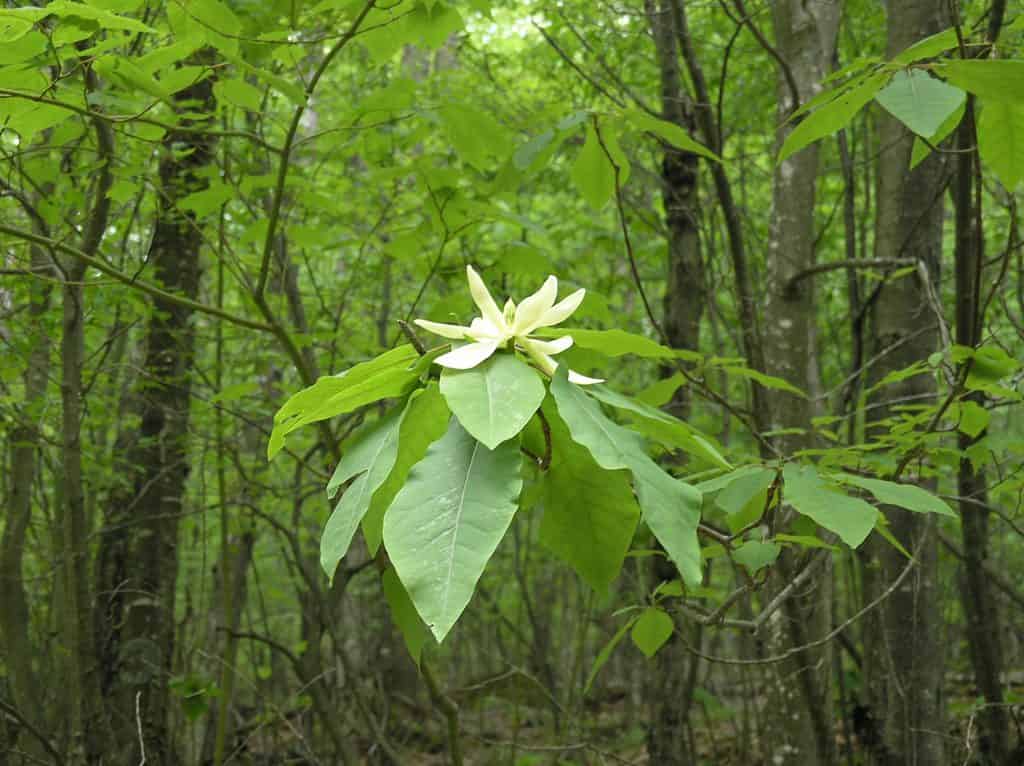
The Fraser magnolia is a deciduous tree that can reach heights of up to 40 feet.
©Richtid / CC BY-SA 3.0, via Wikimedia Commons – License
| Fraser Magnolia | |
|---|---|
| Scientific name: | Magnolia fraseri |
| Type of plant: | Deciduous |
| Distribution: | Southeastern United States |
Often referred to as mountain magnolia, earleaf cucumbertree, or mountain-oread, the Fraser magnolia is a deciduous tree that can attain heights of up to 40 feet (14 m) at maturity. It is known for its strong, pleasant fragrance and snowy white flowers. The plant’s flowers can grow as big as 5.9-9.8 inches (15-25 cm) in diameter and feature as many as nine tepals.
If you want to see a Fraser magnolia in bloom, the best time to visit South Carolina is in late spring and early summer. This is not when they grow/develop but when they usually open fully. Even though the tree’s fruit is about 2.5-4.7 inches (6.5-12 cm) long, it contains only one or two seeds. As a result, farmers see a potent seed crop only once every 4 to 5 years.
4. Paw Paw
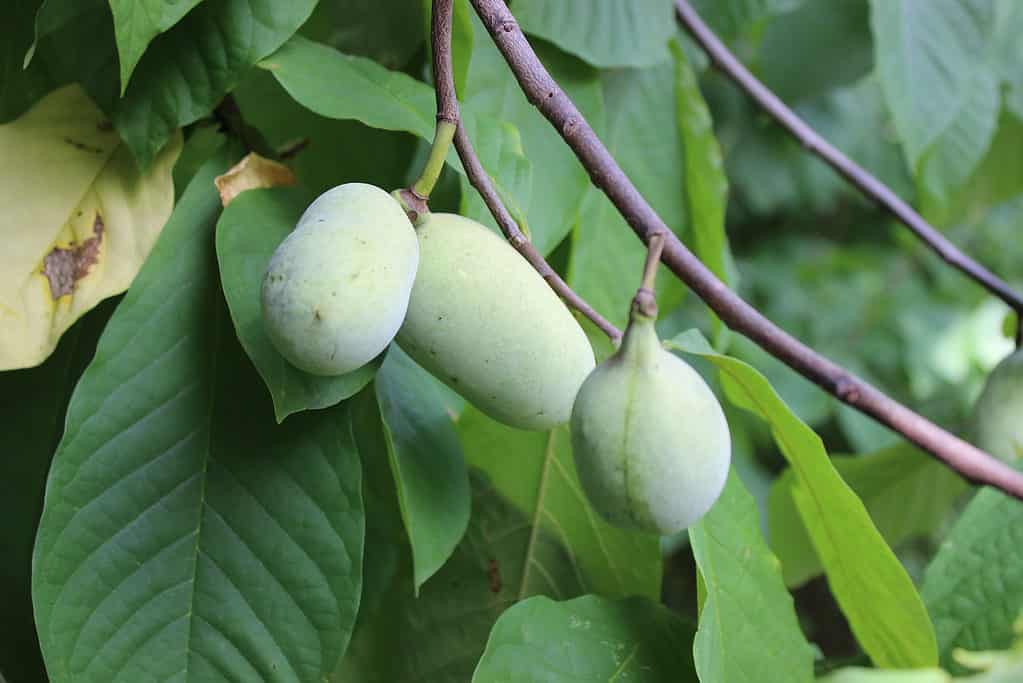
The American pawpaw tree grows in the eastern part of the United States and Canada.
©iStock.com/Jon Kraft
| Paw Paw | |
|---|---|
| Scientific name: | Asimina triloba |
| Type of plant: | Deciduous |
| Distribution: | Eastern United States, Canada |
Asimina triloba is usually called pawpaw, paw paw, paw-paw, or simply the American papaw — as you can see, it enjoys a lot of name diversity! The small tree grows in the eastern part of the United States and Canada. It is known for its rather large, yellow-green/brown fruit that seemingly doesn’t fit the tree.
It would be a shame to pass on tasting the fruits if you come across a pawpaw tree during the ripening season. They are sweet and have a texture resembling custard. In terms of actual taste, people claim it’s a mix between pineapple, mango, and banana. The answer is yes, they can be eaten raw!
The pawpaw usually grows up to 35 feet (11 m) tall (sometimes 45 feet), so it’s quite difficult to miss it!
5. Sumac
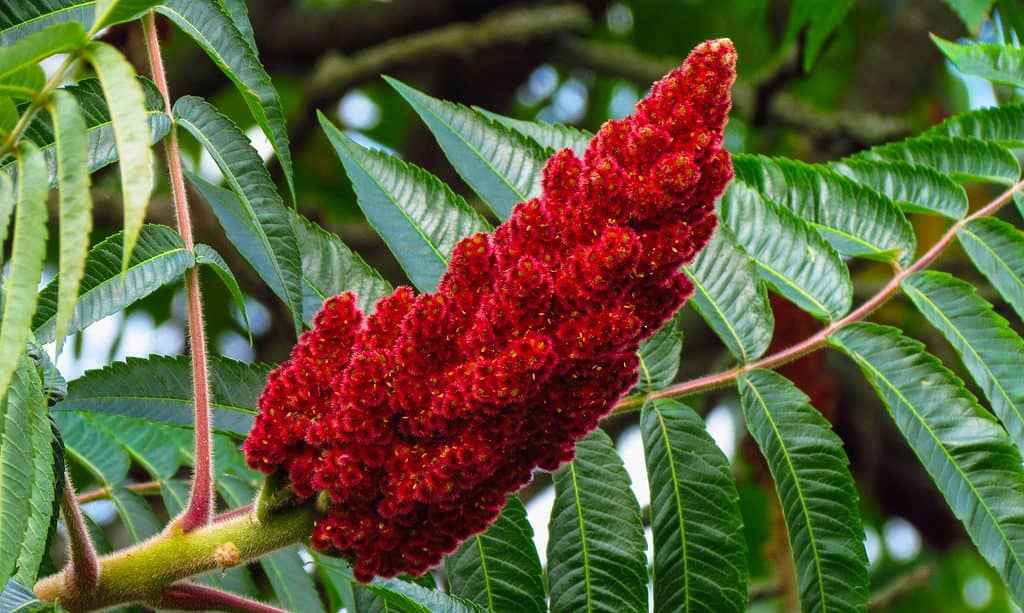
Sumac is a well-known spice found and used worldwide.
©shalom3/Shutterstock.com
| Sumac | |
|---|---|
| Scientific name: | Rhus spp. (Rhus coriaria type species) |
| Type of plant: | Deciduous |
| Distribution: | North America, East Asia, Africa |
Sumac is a well-known spice found and used worldwide. The genus it is a part of (Rhus) contains about 35 species, some of which can be found in South Carolina. The plant is used mainly as a spice, but it can also be found in the medical field and processed into a dye. Other species, though, can cause allergies and even be toxic.
Most species in the Rhus genus can grow up to 3-33 feet (1-10 m) tall. Sumac plants can be recognized by their dense flower heads, organized in spikes or panicles, which grow up to 12 inches (30 cm) long. The fruits of the sumac plant are reddish and covered in hairs.
6. Oakleaf Hydrangea
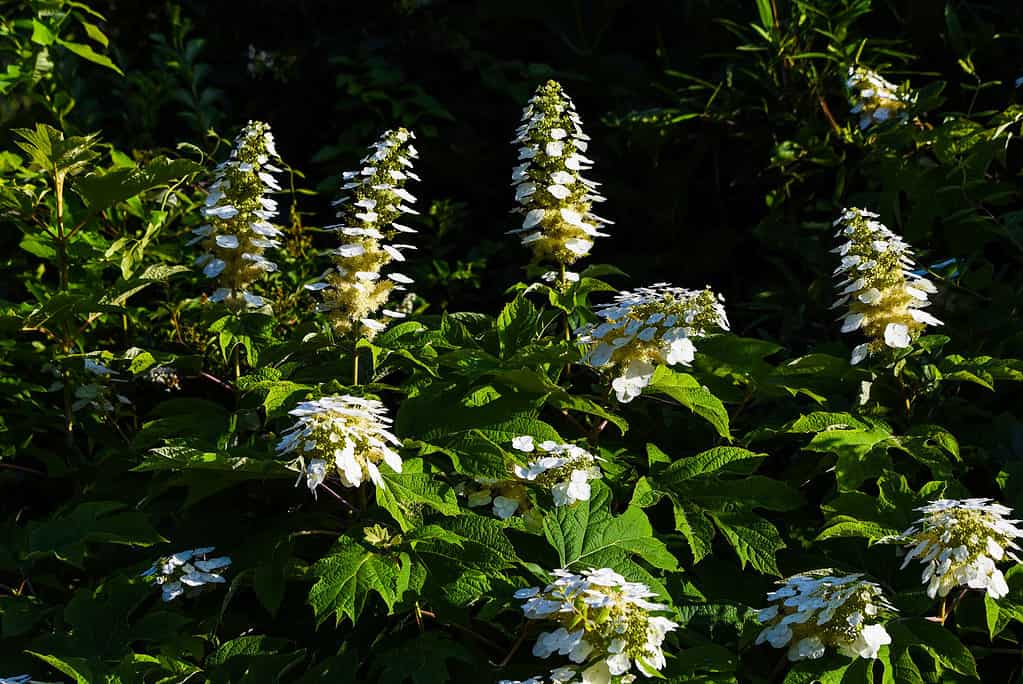
The oakleaf hydrangea is often called oak-leaved hydrangea.
©iStock.com/undefined undefined
| Oakleaf Hydrangea | |
|---|---|
| Scientific name: | Hydrangea quercifolia |
| Type of plant: | Deciduous |
| Distribution: | Southeastern United States |
The oakleaf hydrangea is often referred to as oak-leaved hydrangea and is part of the Hydrangea genus of plants. It is commonly found in Florida, Louisiana, Tennessee, North Carolina, and some parts of South Carolina.
Hydrangea quercifolia is a small shrub that can attain heights of about 3-12 feet (0.9-3.66 m). It is characterized by its open crown that sports erect panicles on which the plant’s flowers sit. In terms of color, the oakleaf hydrangea flowers start as creamy white, slowly turn to pink, and then gain a papery rusty-brown nuance in autumn and winter.
7. Pinkscale Blazing Star
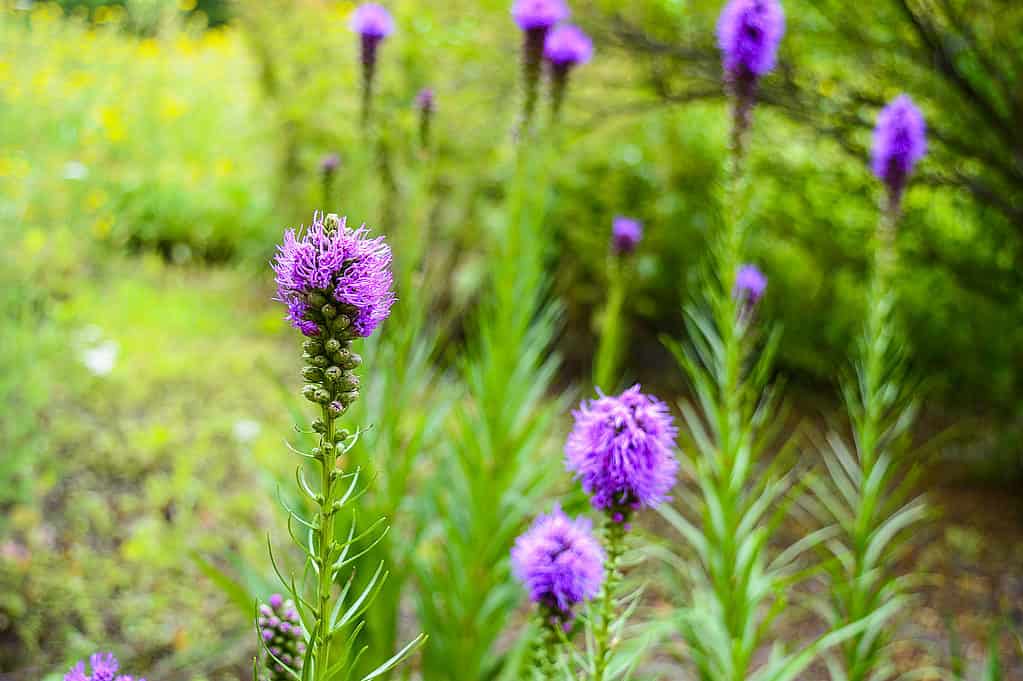
The pinkscale blazingstar is also called the elegant blazingstar.
©agatchen/Shutterstock.com
| Pinkscale Blazingstar | |
|---|---|
| Scientific name: | Liatris elegans |
| Type of plant: | Deciduous |
| Distribution: | Southeastern United States |
The pinkscale blazingstar, also called elegant blazingstar, is part of the Liatris genus (spread throughout North America across many different species). Liatris elegans is commonly found in the southeastern United States (reaching as far as Oklahoma and Texas).
The flower head of the pinkscale blazingstar features about 4-5 florets that can be white, yellow, purple, or pink. In essence, the plant is a rounded corm (sometimes shaped as a turnip). Multiple corms produce stems that can grow up to 11.8-47.2 inches (30-120 cm) tall.
8. Solomon’s Seal

The Solomon’s seal features unbranched leaf stalks.
©Conrad Barrington/Shutterstock.com
| Solomon’s Seal | |
|---|---|
| Scientific name: | Polygonatum biflorum |
| Type of plant: | Herbaceous |
| Distribution: | Eastern and central North America |
Often called great or smooth Solomon’s seal, Polygonatum biflorum is known among plant enthusiasts for its rhizome-located scars. These are said to resemble the ancient Hebrew seal of the now-famous King Solomon. The plant is part of the Polygonatum genus.
The plant features unbranched leaf stalks, which grow up to 3 feet (90 cm) long but can sometimes reach about 6 feet (1.8 m). If you visit South Carolina from March to June, you have the chance to see the plant’s small flowers droop from the mentioned stalks like tears. These flowers will later produce fruits in the form of blue berries.
9. Foamflower
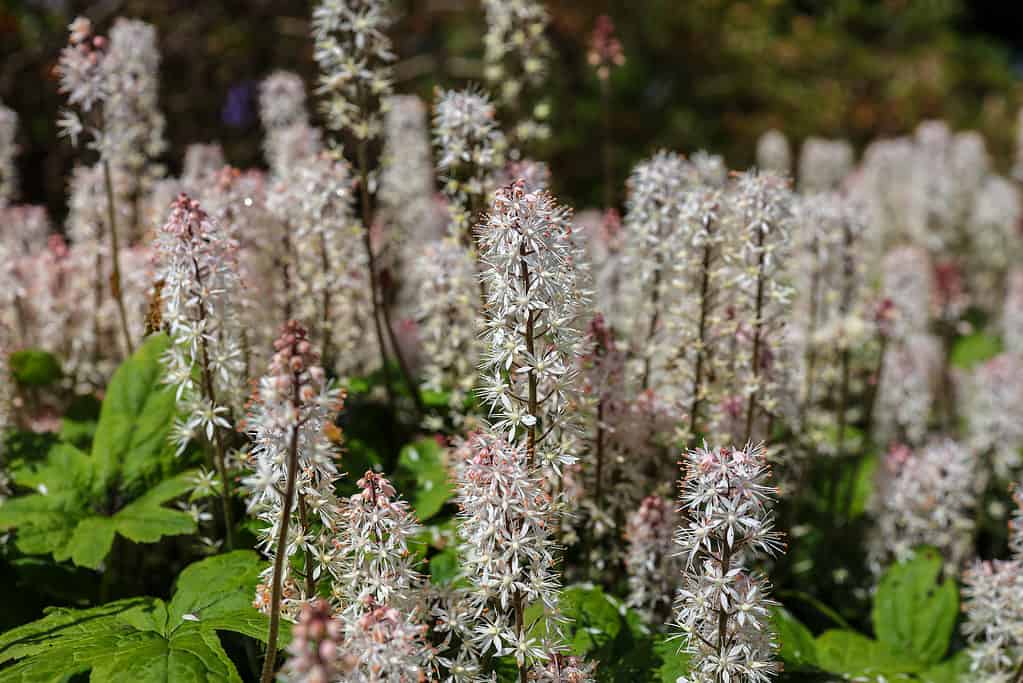
The foamflower develops stalks that can grow up to 8 inches long.
©iStock.com/yujie chen
| Foamflower | |
|---|---|
| Scientific name: | Tiarella cordifolia |
| Type of plant: | Perennial |
| Distribution: | Eastern North America, East Coast of the United States |
Also called the heart-leaved foamflower, Tiarella cordifolia is part of the Tiarella genus. It can be commonly found on the East Coast of the United States. The plant is characterized by its horizontal rhizome and white flowers.
The foamflower develops stalks that can grow up to 8 inches (20 cm) long. It features a raceme equipped with 15 to 20 flowers that are white and feathery. On the other hand, the flowering stem is usually about 6-16 inches (15-40 cm) long.
10. Black Cohosh

The black cohosh is a plant native to most of eastern North America.
©iStock.com/Cynthia Shirk
| Black Cohosh | |
|---|---|
| Scientific name: | Actaea racemosa |
| Type of plant: | Perennial |
| Distribution: | Eastern North America |
The black cohosh, also known as black bugbane, rattle-top, fairy candle, and black snakeroot, is a plant native to most of eastern North America. Woodland habitats are your best shot at sighting this plant, as it prefers “settling” there — look out for small woodland openings!
Actaea racemosa can grow up to 9.8-23.6 inches (25-60 cm) tall and produces flowers in late spring/early summer. The flowers sit on a tall stem of about 30-98 inches (75-250 cm) and form racemes. They have no sepals or petals but feature about 55-110 long white stamens.
Summary of 10 Native Plants in South Carolina
Here’s a recap of 10 native plants in the state of South Carolina that we took a look at:
| Number | Plant | Scientific Name | Type | Distribution |
|---|---|---|---|---|
| 1 | American Holly | Ilex opaca | Evergreen | Eastern and south-central United States |
| 2 | Devilwood | Cartrema americana | Evergreen | Southeastern North America |
| 3 | Fraser Magnolia | Magnolia fraseri | Deciduous | Southeastern United States |
| 4 | Paw Paw | Asimina triloba | Deciduous | Eastern United States, Canada |
| 5 | Sumac | Rhus spp. | Deciduous | North America, East Asia, Africa |
| 6 | Oakleaf Hydrangea | Hydrangea quercifolia | Deciduous | Southeastern United States |
| 7 | Pinkscale Blazing Star | Liatris elegans | Deciduous | Southeastern United States |
| 8 | Solomon’s Seal | Polygonatum biflorum | Herbaceous | Eastern and central North America |
| 9 | Foamflower | Tiarella cordifolia | Perennial | Eastern North America, East Coast of the United States |
| 10 | Black Cohosh | Actaea racemosa | Perennial | Eastern North America |
The photo featured at the top of this post is © Bonnie Taylor Barry/Shutterstock.com
Sources
- Wikipedia, Available here: https://en.wikipedia.org/wiki/South_Carolina#Flora_and_fauna
- South Carolina Wildlife Federation, Available here: https://www.scwf.org/native-plant-list
Thank you for reading! Have some feedback for us? Contact the AZ Animals editorial team.






